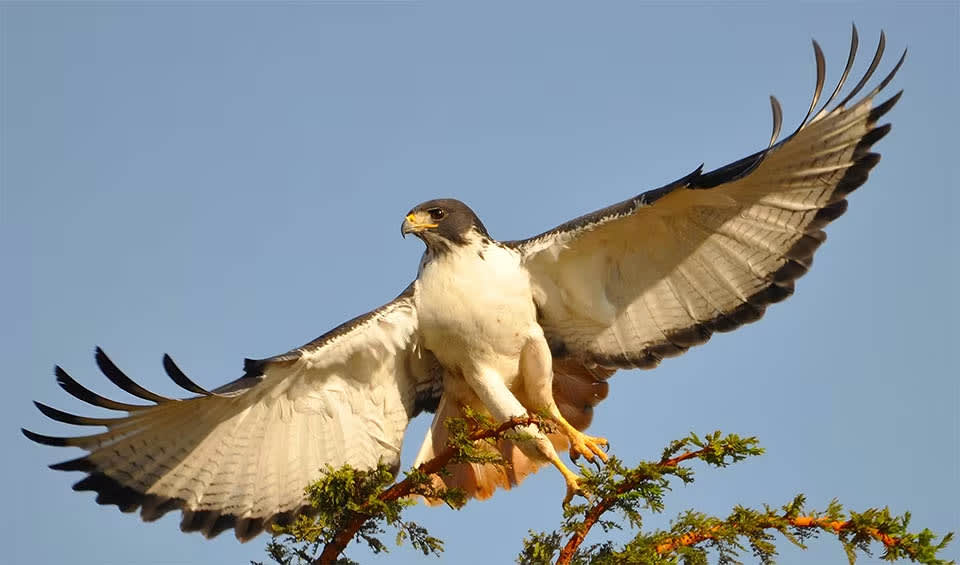Buteo – Hawks
The sturdy body, complimented with broad wings, make these raptors one of a kind
Buteo is one of the most familiar groups of raptors, encompassing various species commonly referred to as hawks or buzzards in different parts of the world. These birds are characterized by their broad, rounded wings and robust bodies, which are well-suited to soaring flight. Their wing spans are impressive, varying significantly among species, with some of the largest Buteos boasting wingspans close to or over a meter (3.3 feet) across.
Buteos are known for their remarkable flight capabilities. Each species exhibits a flight style adapted to its environment and hunting technique. Some, like the Red-tailed Hawk (Buteo jamaicensis), are masters of the high soar, using thermal updrafts to gain altitude and scan vast areas for prey without expending much energy. Others may use a more direct and powerful flapping flight to pursue prey or navigate through denser habitats.
These raptors are predominantly monogamous, often forming long-term pair bonds that can last for years. During the breeding season, they engage in spectacular aerial displays and calls to strengthen their pair bonds and delineate their territories. Nesting duties are shared, with the male typically responsible for providing food to the female and offspring, while the female primarily incubates the eggs and tends to the nestlings.
The diet of Buteos is varied, typically consisting of small to medium-sized mammals, birds, reptiles, and even insects. They are adept hunters, utilizing their keen eyesight and powerful talons to capture and subdue their prey. Their hunting techniques may involve perching and pouncing or soaring and swooping down on prey from above.
Siblicide can occur within Buteo nests, particularly when food is scarce. The larger and stronger siblings, usually the first-born, may outcompete their nest mates for food provided by the parents, which can result in the death of the weaker chicks.
Species in this genus
Augur buzzard
The sturdy body complimented with broad wings make these raptors one of a kind
Common buzzard
They eat just about everything — rabbits, rodents, birds, carrion, earthworms, insects… even beetles get a look-in
Ferruginous hawk
The world’s largest soaring hawk, perfectly suited to the open skies and remarkably unafraid of humans often in close proximity
Red-tailed hawk
One of the most common raptors across North America





